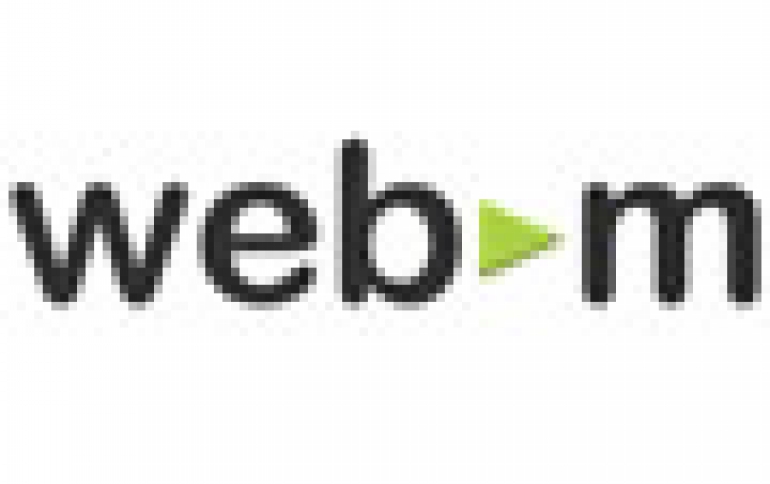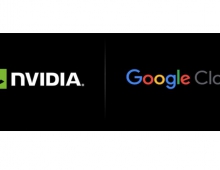
Google Announces WebM Open Source Media Format, Mozilla and Adobe Support It
Google today ntroduced WebM, a broadly-backed community effort to develop a media format for the open web.
Google made the announcement at the I/O 2010, the company's largest developer conference of the year. The event is being held May 19 and 20 at Moscone West in San Francisco.
WebM includes VP8, a high-quality video codec released by Google under a BSD-style, royalty-free license. It also includes Vorbis, an already open source and broadly implemented audio codec as well as a container format based on a subset of the Matroska media container.
Google claims that the VP8 codec delivers high quality video while efficiently adapting to the varying processing and bandwidth conditions found on today?s broad range of web-connected devices. VP8's efficient bandwidth usage will mean lower serving costs for content publishers and high quality video for end-users. The codec's relative simplicity makes it easy to integrate into existing environments and requires less manual tuning to produce high quality results.
A developer preview of WebM and VP8, including source code, specs, and encoding tools is available today at www.webmproject.org.
Many industry leaders and web community members are collaborating on the development of WebM and integrating it into their products. These include Mozilla, Opera, Google Chrome, Adobe, AMD, ARM, Broadcom, Nvidia, Qualcomm and many others.
Other I/O 2010 Announcements
At the same event, Google announced the Chrome Web Store, Wave open sign-ups, App Engine for Business and a collaboration with VMware.
Google announced the Chrome Web Store, an open marketplace for web apps that helps people find web applications across the internet and allows developers to reach new users.
Google says that Google Wave is open to all users at wave.google.com, as a Google Labs product -- no invitation needed. Google Apps administrators will also have the option to add Wave as a Labs feature for their domains, helping groups of people communicate and work together more productively. The updated Google wave is much faster and much more stable than when Google began the preview, while it is also easier to use. For example, users can now get email notifications when waves change, easily navigate to unread parts of a wave, and remove participants added by mistake. Google has also added permission management options and an extensions gallery. The company has also made several improvements to the Wave APIs and open sourcing additional components for developers building their own Wave services. Read more about these updates on Google's developer blog.
App Engine for Business: Google App Engine for Business lets companies build and maintain their own applications on the same scalable infrastructure that powers Google applications, with added management and support features tailored specifically for the enterprise. New capabilities for businesses include the ability to manage all the apps in an organization from one place, simple pricing based on users and applications, premium developer support, a 99.9% uptime service level agreement, and coming later this year, access to premium features like cloud-based SQL and SSL.
Google's colaboration with VMware will introduce cloud portability, which makes it easy for Java developers to use familiar tools to develop and deploy rich web apps in the environments of their choice. In just one click, users of the new versions of SpringSource Tool Suite and Google Web Toolkit can deploy their application onto Google App Engine for Business, or a VMware environment, or other infrastructure such as Amazon EC2.
WebM includes VP8, a high-quality video codec released by Google under a BSD-style, royalty-free license. It also includes Vorbis, an already open source and broadly implemented audio codec as well as a container format based on a subset of the Matroska media container.
Google claims that the VP8 codec delivers high quality video while efficiently adapting to the varying processing and bandwidth conditions found on today?s broad range of web-connected devices. VP8's efficient bandwidth usage will mean lower serving costs for content publishers and high quality video for end-users. The codec's relative simplicity makes it easy to integrate into existing environments and requires less manual tuning to produce high quality results.
A developer preview of WebM and VP8, including source code, specs, and encoding tools is available today at www.webmproject.org.
Many industry leaders and web community members are collaborating on the development of WebM and integrating it into their products. These include Mozilla, Opera, Google Chrome, Adobe, AMD, ARM, Broadcom, Nvidia, Qualcomm and many others.
Other I/O 2010 Announcements
At the same event, Google announced the Chrome Web Store, Wave open sign-ups, App Engine for Business and a collaboration with VMware.
Google announced the Chrome Web Store, an open marketplace for web apps that helps people find web applications across the internet and allows developers to reach new users.
Google says that Google Wave is open to all users at wave.google.com, as a Google Labs product -- no invitation needed. Google Apps administrators will also have the option to add Wave as a Labs feature for their domains, helping groups of people communicate and work together more productively. The updated Google wave is much faster and much more stable than when Google began the preview, while it is also easier to use. For example, users can now get email notifications when waves change, easily navigate to unread parts of a wave, and remove participants added by mistake. Google has also added permission management options and an extensions gallery. The company has also made several improvements to the Wave APIs and open sourcing additional components for developers building their own Wave services. Read more about these updates on Google's developer blog.
App Engine for Business: Google App Engine for Business lets companies build and maintain their own applications on the same scalable infrastructure that powers Google applications, with added management and support features tailored specifically for the enterprise. New capabilities for businesses include the ability to manage all the apps in an organization from one place, simple pricing based on users and applications, premium developer support, a 99.9% uptime service level agreement, and coming later this year, access to premium features like cloud-based SQL and SSL.
Google's colaboration with VMware will introduce cloud portability, which makes it easy for Java developers to use familiar tools to develop and deploy rich web apps in the environments of their choice. In just one click, users of the new versions of SpringSource Tool Suite and Google Web Toolkit can deploy their application onto Google App Engine for Business, or a VMware environment, or other infrastructure such as Amazon EC2.





















